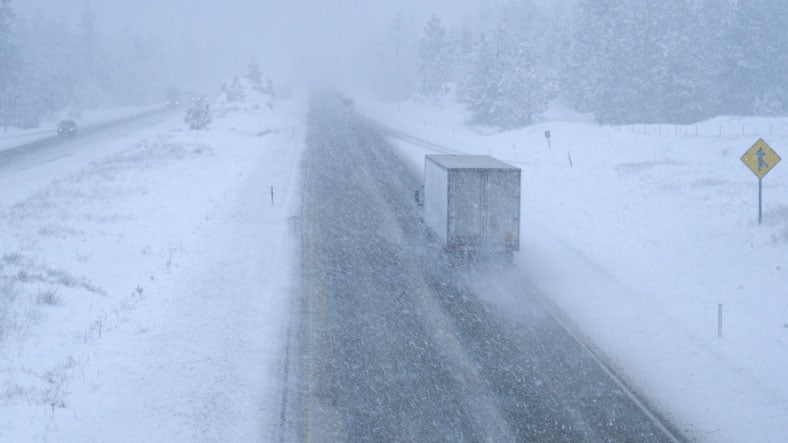You May Be Unknowingly Storing Dangerous Peroxide Formers
Peroxide forming chemicals are useful—and even common—in R&D and production labs. These chemicals, however, pose serious risk if mishandled or stored improperly. Unfortunately, many managers don’t realize these dangerous chemicals are present in their worksites, and thus don’t take the proper precautions to ensure the safety of their employees, their facilities, and the communities in which they operate.
What Are Peroxide Formers? How Do We Know Peroxides Are Present?
These potentially harmful chemicals are commonplace across labs of all types, in many industries—which means immense, unrecognized risk is often lurking. A “peroxide forming chemical” is one that, as it degrades, forms peroxide crystals. These crystals are unstable and shock-sensitive, and as such, explosive if mishandled.
Crystallization visibly presents as small snowflake-like or glass wool precipitates:
- Inside or around a chemical container
- Floating in solvent
- Collecting near the bottom of a container; this is the most common crystal location for peroxide formers
Don’t rely only on the visibility of crystals, however, to identify peroxide formation. Peroxides may form inside a chemical container without the presence of crystals. Chemical discoloration or stratification inside the container can also indicate peroxide formation. Containers presenting any of these characteristics should be treated as potentially explosive—do not move, open, or use a peroxide forming chemical container if any of these visual indicators are present.
Unfortunately, peroxides may also form without any visual clue at all. As such, any lab safety stakeholder must familiarize themselves with the peroxide formers present in the workplace and treat these chemicals with extreme caution.
Common peroxide formers include:
- 2-Butanol
- Tetrahydrofuran (THF)
- Ethyl Ether
- Diethyl Ether
- Diisopropyl Ether
- Vinyl Ethers
- 1,4-Dioxane
- And many, many others
Peroxide Formers: A Huge Lab Threat
Just how dangerous are peroxide formers? Even without visible crystals or other indicators, the major instability of peroxide forming compounds is a major threat. Even mild friction, impact, or agitation can result in deflagration—combustion caused by heat—when a peroxide crystal detonates and ignites the organic vapors and liquid inside the chemical container. Crystal presence on a container plug or cap threads, for example, can cause detonation when the cap is removed. This reaction is often further exacerbated by the oxygen found within the peroxides themselves.
Almost every aspect of peroxide former use can be highly hazardous, including during:
- Storage
- Handling
- Testing
- Denaturing
- Shipping
That said, lab staff should be well versed in identifying peroxide forming chemicals and understand the standard operating procedures when they have these chemicals stocked in their labs.
Few Complete Mitigation Strategies
Proper chemical container maintenance can help prevent these peroxides from forming in the first place. Date of receipt for any peroxide former should be immediately marked on the bottle and these chemicals should be segregated from other flammables when in storage.
Lab staff must regularly monitor any peroxide forming chemicals used or stored onsite, and dispose of them once they expire or begin to form crystals. Disposal carries risk, however, as shipping and ultimate chemical elimination introduce the same deflagration risk as onsite handling.
Denaturing, or destroying the characteristic properties of these chemicals and rendering them inert, can help return the chemical to a less reactive state. This improves the safety of transportation and chemical elimination. But given the risks involved in this very hazardous procedure, only highly trained professionals should attempt to denature a chemical in which peroxides have formed.
Partnering for Peroxide Former Safety
While these strategies can help mitigate the hazards associated with peroxide forming chemicals, they cannot completely eliminate risk. Additionally, because of how commonly and widely used these chemicals are, there’s no way to totally prevent peroxide former use in lab spaces. As such, it is crucial that those working with these chemicals have the resources and assistance needed to keep them safe.
The only true way to know if peroxides have formed is through regular professional testing and analysis. Any peroxide forming material that, when tested, displays peroxide levels above 0 parts per million (ppm) should be handled as explosive. This testing, coupled with onsite support for chemical handling, moving, and storing, is the only way to completely protect your lab staff, facility, and community.
Triumvirate Environmental’s team of highly skilled professionals is trained to handle all peroxide forming chemicals, whether it’s a one-time project or on a routine basis. We can effectively and safely test, denature, and ship chemicals that have any trace of peroxide in, on, or around any onsite containers. Read our recent cutsheet, and contact us today to learn more about how we can help you.







